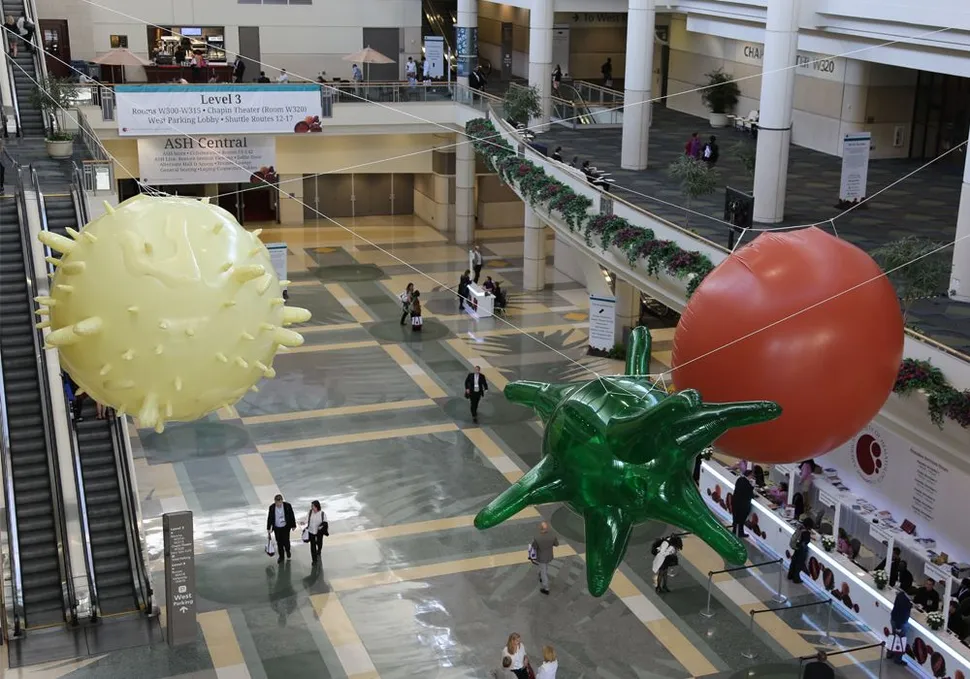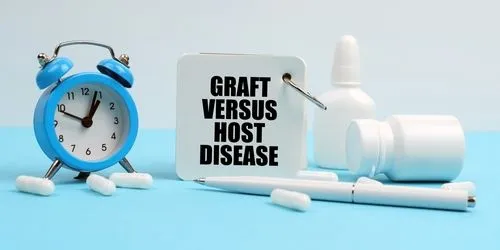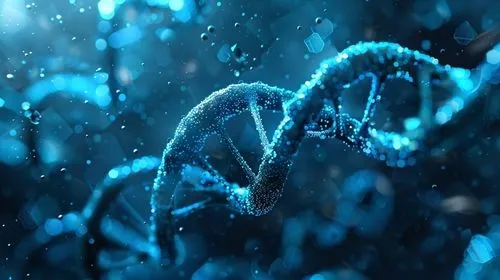ASH 2015 – The Immunotherapy Revolution in Multiple Myeloma

As the name implies, there seems to be great excitement and hope in using the patients' own immune system to fight and ultimately cure myeloma. For the most part, chemotherapy has been the primary weapon in the myeloma specialists' treatment toolbox and immunotherapy was considered “Not Ready For Prime Time”. I attended an ASH symposium where Dr. Jatin Shah from MD Anderson Cancer Center was the program chair, with presentations from Dr. Sundar Jagannath of Mount Sinai, and David Avigan of Harvard Medical School. As a preamble, I have to let you know this topic is very complex, and in the beginning they asked a number of questions used to see how much the audience knew about the biology of immunotherapy. The answers were multiple choice and from the results it looked like we might have gotten more consensus if we used darts at 100 yards. After the meeting, the same questions were asked and the results did not change that much. The audience was made up of doctors, researcher, knowledgeable patients, and health care professionals. So I will try to do my best to give you a top line overview of the meeting, but skip the technical information. Dr. Shah provided a preface and outline of the program. He stated there have been many areas of new understanding in the myeloma specialist community. Triplet combos are much better than doublets, early transplant is better than delaying transplant till relapse, and maintenance is preferred to no maintenance. However there are still challenges: High-risk myeloma, relapsed and refractory myeloma, and we are not curing a significant number of patients. He stated some of the treatment goals should be to manage the clonal evolution, focus on high risk disease, and target the immune system. Dr. Jagannath first pointed out that myeloma presents at diagnosis with many clones. When you go through treatment all but the drug resistant clones remain. As a result, more resistant clones are developed. In myeloma cells CS1 (also known as SLAM-F7) is expressed on 95% or myeloma cells and in NK cells but not in other cells, in the body. This makes it a good target for any immunotherapy. Elotuzumab uses this as a target and has recently been approved. It does not work well as a single agent but does work in a synergistic way with Revlimid. Elotuzumab, Revlimid, and Decadron had a 32 month progression free survival in a pretreated patient populations. Elotuzumab may negate some of the high risk cytogenetics. Elotuzumab, Revlimid and dex vs. Revlimid and dex alone have a very similar toxicity profile, so the addition of Elotulzumab does not add to toxicity which is usually not the case with other drugs. Daratumumab targets CD38 which is expressed on most myeloma cells, however it is also expressed on some CD4, CD8, and NK cells. Daratumumab has many different mechanisms of action, and as a single agent had a response rate of 36%. In addition, there were low grade 3 and 4 side effects, which is quite good. It worked across all types of myeloma including those that were refractory to 4 lines of treatment. All however was not a bed of roses, in that the duration of the infusion can take up to 8 hours, and there is an infusion reaction in 43% of the patients during the first infusion. The second infusion takes on average 4 hours and follow-on infusion time is drastically reduced to around around an hour or less. CD38 is expressed on red blood cells and as a result patient may require a blood bank infusion. In addition, the Daratumumab interferes with blood typing so patients need to know their blood type before they receive a daratumumab infusion. How might these drugs be used? They both are for relapsed and refractory myeloma and we were told, "Think E before D." Elotuzumab has been approved for use with at least one prior therapy while Daratumumab has been approved only after 3 lines of treatment. Future trials will be forthcoming as a first line treatment. Dr. Avigan discussed a new immunotherapy approach which combined marrow cells with dendritic cells and these were used to vaccinate heavily pretreated patients. The approach showed good results and were combined with Revlimid, which helps to expand T cells. This trial has treatment arms either with and without Revlimid maintenance and a multi-center clinical trial is planned. At the conference, check point inhibitors were also discussed, which help the immune system hit the gas or the brakes to kill disease or not. Some of these checkpoint inhibitors (PD1 and PDL-1) are now being investigated as ways to take the brakes off the immune system so it can do it's myeloma-killing job. This is Gary Petersen editor@myelomasurvival.com and member of the MCRI Myeloma Crowd Research Initiative reporting to you live from Orlando at ASH 2015.
As the name implies, there seems to be great excitement and hope in using the patients' own immune system to fight and ultimately cure myeloma. For the most part, chemotherapy has been the primary weapon in the myeloma specialists' treatment toolbox and immunotherapy was considered “Not Ready For Prime Time”. I attended an ASH symposium where Dr. Jatin Shah from MD Anderson Cancer Center was the program chair, with presentations from Dr. Sundar Jagannath of Mount Sinai, and David Avigan of Harvard Medical School. As a preamble, I have to let you know this topic is very complex, and in the beginning they asked a number of questions used to see how much the audience knew about the biology of immunotherapy. The answers were multiple choice and from the results it looked like we might have gotten more consensus if we used darts at 100 yards. After the meeting, the same questions were asked and the results did not change that much. The audience was made up of doctors, researcher, knowledgeable patients, and health care professionals. So I will try to do my best to give you a top line overview of the meeting, but skip the technical information. Dr. Shah provided a preface and outline of the program. He stated there have been many areas of new understanding in the myeloma specialist community. Triplet combos are much better than doublets, early transplant is better than delaying transplant till relapse, and maintenance is preferred to no maintenance. However there are still challenges: High-risk myeloma, relapsed and refractory myeloma, and we are not curing a significant number of patients. He stated some of the treatment goals should be to manage the clonal evolution, focus on high risk disease, and target the immune system. Dr. Jagannath first pointed out that myeloma presents at diagnosis with many clones. When you go through treatment all but the drug resistant clones remain. As a result, more resistant clones are developed. In myeloma cells CS1 (also known as SLAM-F7) is expressed on 95% or myeloma cells and in NK cells but not in other cells, in the body. This makes it a good target for any immunotherapy. Elotuzumab uses this as a target and has recently been approved. It does not work well as a single agent but does work in a synergistic way with Revlimid. Elotuzumab, Revlimid, and Decadron had a 32 month progression free survival in a pretreated patient populations. Elotuzumab may negate some of the high risk cytogenetics. Elotuzumab, Revlimid and dex vs. Revlimid and dex alone have a very similar toxicity profile, so the addition of Elotulzumab does not add to toxicity which is usually not the case with other drugs. Daratumumab targets CD38 which is expressed on most myeloma cells, however it is also expressed on some CD4, CD8, and NK cells. Daratumumab has many different mechanisms of action, and as a single agent had a response rate of 36%. In addition, there were low grade 3 and 4 side effects, which is quite good. It worked across all types of myeloma including those that were refractory to 4 lines of treatment. All however was not a bed of roses, in that the duration of the infusion can take up to 8 hours, and there is an infusion reaction in 43% of the patients during the first infusion. The second infusion takes on average 4 hours and follow-on infusion time is drastically reduced to around around an hour or less. CD38 is expressed on red blood cells and as a result patient may require a blood bank infusion. In addition, the Daratumumab interferes with blood typing so patients need to know their blood type before they receive a daratumumab infusion. How might these drugs be used? They both are for relapsed and refractory myeloma and we were told, "Think E before D." Elotuzumab has been approved for use with at least one prior therapy while Daratumumab has been approved only after 3 lines of treatment. Future trials will be forthcoming as a first line treatment. Dr. Avigan discussed a new immunotherapy approach which combined marrow cells with dendritic cells and these were used to vaccinate heavily pretreated patients. The approach showed good results and were combined with Revlimid, which helps to expand T cells. This trial has treatment arms either with and without Revlimid maintenance and a multi-center clinical trial is planned. At the conference, check point inhibitors were also discussed, which help the immune system hit the gas or the brakes to kill disease or not. Some of these checkpoint inhibitors (PD1 and PDL-1) are now being investigated as ways to take the brakes off the immune system so it can do it's myeloma-killing job. This is Gary Petersen editor@myelomasurvival.com and member of the MCRI Myeloma Crowd Research Initiative reporting to you live from Orlando at ASH 2015.

about the author
Gary Petersen
Gary is a myeloma survivor and patient advocate. His work centers around helping patients live longer by helping them to find facilities who are beating the average survival statistics. You can find Gary's site at www.myelomasurvival.com and follow him on Twitter at @grpetersen1
More on Treatment Advances
Trending Articles




Get the Latest Multiple Myeloma Updates, Delivered to You.
By subscribing to the HealthTree newsletter, you'll receive the latest research, treatment updates, and expert insights to help you navigate your health.















